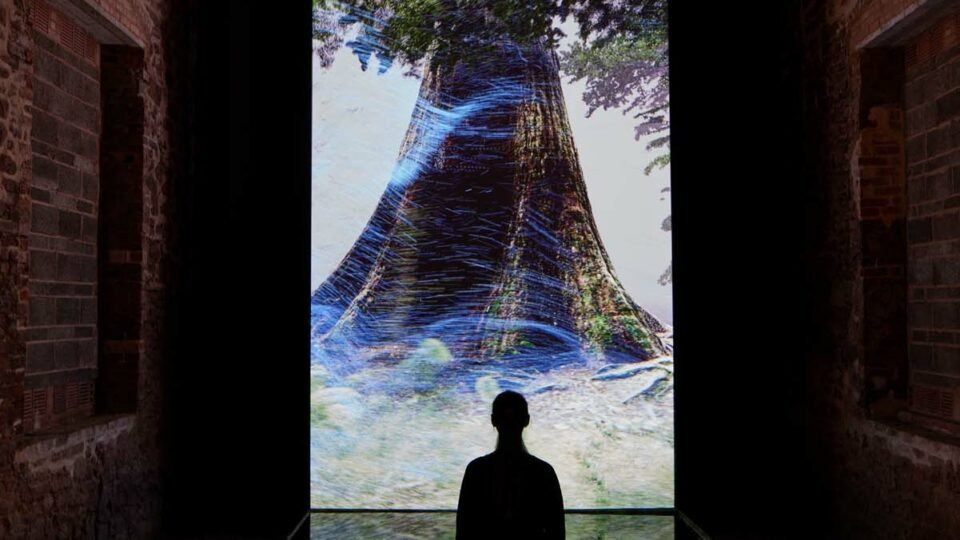Creative Regeneration: Climate crisis art feature for Aesthetica
“Climate grief” is a phrase that we hear more and more these days. It describes a psychological state: the dizzying combination of loss, anxiety, anger and sadness felt in the face of the climate emergency as it worsens. In 2021, a worldwide survey of 16 to 24-year-olds found that four in 10 were so afraid of the future, they were reluctant to have children.
Previous work by Marshmallow Laser Feast; Observations On Being, Coventry City of Culture 2021. Installation image of We Live in an Ocean of Air Video Edition. Photo by David Levene.
This is surely a thoroughly rational response when you look at the facts. The 10 years leading up to 2019 were, on average, the hottest ever on record. Floods, wildfires, storms and many other extreme, life-threatening weather events are becoming increasingly commonplace, up 85% in the last 20 years. We have lost 70% of animal species in just under 50 years. There are plenty of reasons to grieve.
And yet this route into discussion of the crisis isn’t always the most helpful. “In our early stage workshops Will Skeaping from Extinction Rebellion introduced the idea of the ‘apocalyptic recap’,” says Caroline Till, co-founder of futures research agency Franklin Till. “You start by presenting the situation as it is – this is gravity of the damage we’ve done, isn’t it terrible before talking about what we need to do differently…” It’s definitely an important technique used to foster understanding of the situation. Cumulatively, however, this can have the effect of making people feel powerless, so overwhelmed that they ignore what’s happening – similar to the notion of compassion fatigue in photojournalism – that we reach a point where we become inured to images of suffering and look away in a state of apathy.
When Caroline Till and Kate Franklin came on board as guest curators to work alongside Barbican International Enterprises’ Co-Head Luke Kemp on Our Time on Earth, the team were intent on adopting a different strategy. “It’s important to have awareness of the scale of the issue, but it can be paralysing. We wanted to carve out a space to build a constructive way forward, spotlighting the ingenuity of art, design and culture to do that,” she says. They took inspiration from the American environmental activist Joanna Rogers Macy (b. 1929) who talks about this unique moment in history – the “Great Turning.” Instead of envisioning apocalypse, she speaks of “adventure.” She writes: “Of all the dangers we face, from climate chaos to nuclear war, none is so great as the deadening of our response.” A radical optimist for whom hope is a productive act, Macy argues nothing less than a complete transformation in consciousness will save us…
